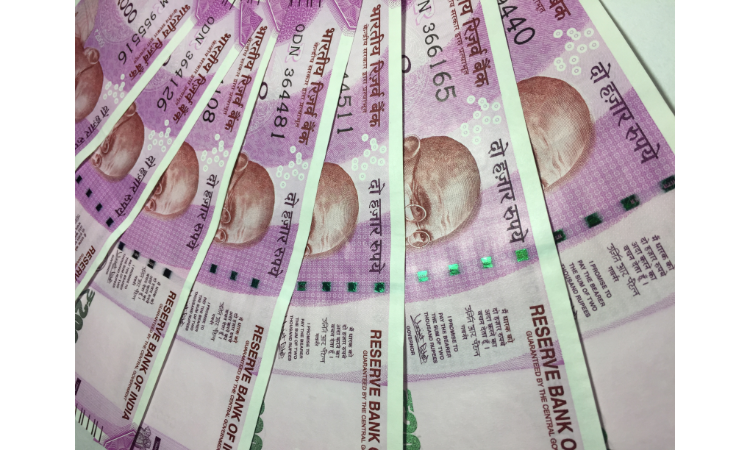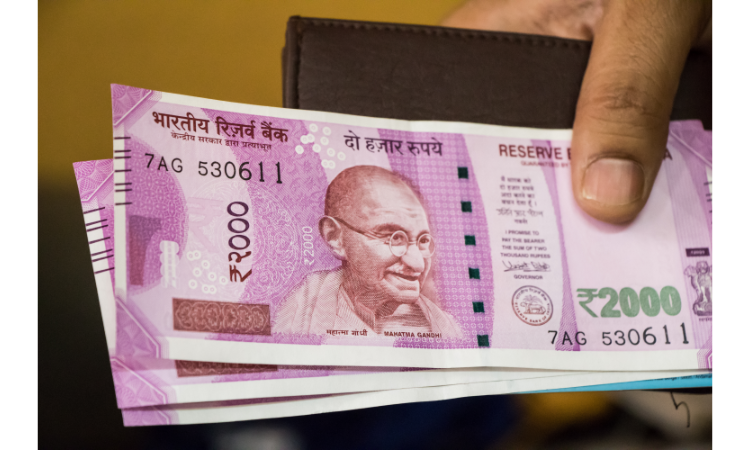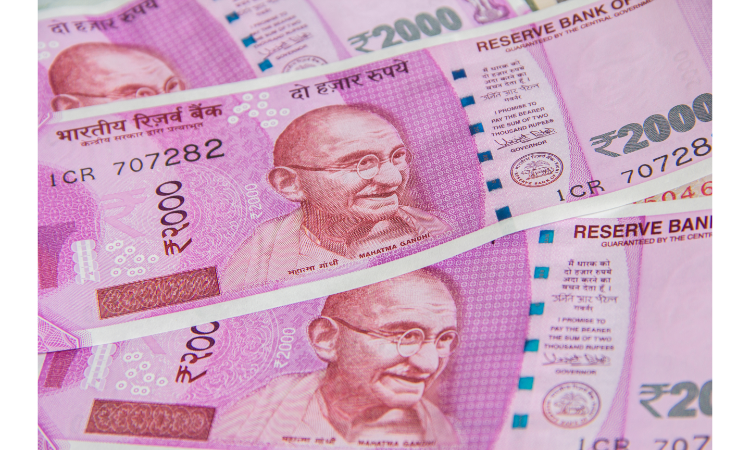Can Rs 2,000 notes still be used in everyday transactions?

RBI Set to Remove Rs 2000 Notes from Circulation.
On May 19, the Reserve Bank of India (RBI) issued a statement announcing its decision to remove Rs 2,000 notes from active circulation, an update that raised a few eyebrows and triggered numerous queries. The bank’s clarification is that these Rs 2,000 notes will be withdrawn from circulation but will remain legal tender, thereby calming the initial confusion.
So, why has the RBI decided to withdraw the ₹2,000 note from circulation? The Rs 2,000 denomination banknotes were primarily introduced in November 2016 under the RBI Act, 1934, to promptly address the currency requirement of the economy after the withdrawal of Rs 500 and Rs 1,000 banknotes. However, the usage of this denomination isn’t common in everyday transactions. Moreover, with an ample supply of other denominations and a majority of these notes reaching the end of their estimated lifespan, the RBI has decided to withdraw the Rs 2,000 currency notes from circulation in accordance with its ‘Clean Note Policy.’
The Clean Note Policy aims at ensuring good quality banknotes for the public. This means while the RBI is set to withdraw Rs 2,000 notes, it’s primarily to maintain the quality of circulating currency.
Even after this change, you’ll be able to use these notes for normal transactions and deposit them on or before September 30, 2023.
Deposits into accounts can be made without restrictions as long as it is compliant with the extant Know Your Customer (KYC) norms and other statutory/regulatory requirements. Exchanges, however, will be limited to Rs 20,000 at a time. For those dealing with Business Correspondents (BCs), the daily exchange limit will be Rs 4,000.
The exchange facility will commence from May 23, 2023, to allow banks to make necessary arrangements. Notably, you don’t need to be a bank customer to avail this exchange service, and no fees will be charged for it. The bank will accommodate special arrangements for senior citizens and persons with disabilities.
If you can’t deposit or exchange your Rs 2,000 notes immediately, there’s no need to worry. You have a period of over four months to complete this task. However, if a bank refuses to offer these services or if you’re dissatisfied with their response, you can lodge a complaint under the Reserve Bank – Integrated Ombudsman Scheme (RB-IOS), 2021 at the Complaint Management System portal of RBI.
So, despite the RBI’s circular on ₹2000 currency notes withdrawal, remember that the banknotes in ₹2000 denomination will continue to be legal tender and it’s simply a move to replace older, worn-out notes with newer ones. Keep in mind that it’s just a regular banking process designed for the operational convenience of the banking system and the public.
Frequently Asked Questions About the Withdrawal of Rs 2,000 Notes from Circulation

1. Why has the RBI decided to withdraw Rs 2,000 notes from circulation?
The RBI introduced the Rs 2,000 denomination banknote in November 2016 to meet the economy’s urgent currency requirement after Rs 500 and Rs 1,000 notes were withdrawn. Now, with ample supply of other denominations and the Rs 2,000 notes reaching the end of their estimated lifespan, the RBI has decided to withdraw ₹2,000 notes from circulation in accordance with its ‘Clean Note Policy’.
2. What does the ‘Clean Note Policy’ mean?
The ‘Clean Note Policy’ is a strategy implemented by the RBI to provide good quality banknotes to the public, thereby ensuring the integrity and longevity of circulating currency.
3. Will Rs 2,000 notes still be legal tender?
Yes, despite the RBI’s decision to withdraw Rs 2,000 notes from circulation, these notes will remain legal tender.
4. Can I still use Rs 2,000 notes for daily transactions?
Absolutely, you can continue using Rs 2,000 banknotes for transactions and also accept them as payment. However, you are encouraged to deposit or exchange these notes on or before September 30, 2023.
5. How can I deposit or exchange Rs 2,000 notes?
You can visit any bank branch to deposit or exchange the Rs 2,000 notes held by you. The facility for depositing and exchanging will be available at all banks until September 30, 2023.
6. Is there a deposit limit for Rs 2,000 banknotes?
No, you can deposit Rs 2,000 banknotes into your account without any limit, subject to compliance with existing Know Your Customer (KYC) norms and other applicable regulatory requirements.
7. Is there a limit on the amount of Rs 2,000 notes that can be exchanged at a time?
Yes, you can exchange Rs 2,000 notes up to a limit of Rs 20,000 at a time.
8. Can I exchange Rs 2,000 notes through Business Correspondents (BCs)?
Yes, you can exchange Rs 2,000 notes through BCs, but up to a daily limit of Rs 4,000 per account holder.
9. When does the exchange facility start?
To allow banks to prepare, the exchange facility will be available from May 23, 2023.
10. Do I have to be a bank customer to exchange Rs 2,000 notes?
No, you don’t have to be a customer of the bank to exchange Rs 2,000 notes. Even non-account holders can exchange Rs 2,000 notes up to a limit of Rs 20,000 at a time at any bank branch.
11. What if I need more than Rs 20,000 cash for business or other purposes?
You can deposit Rs 2,000 notes into your account without any limit, and then withdraw the required amount from the deposited funds.
12. Do I need to pay any fee for the exchange service?
No, the exchange service is provided free of charge.
13. Are there any special arrangements for senior citizens or persons with disabilities?
Yes, banks have been instructed to make special arrangements to reduce any inconvenience for senior citizens and persons with disabilities looking to exchange or deposit Rs 2,000 notes.
14. What if I can’t deposit or exchange Rs 2,000 notes immediately?
A period of over four months is given for the deposit or
exchange of Rs 2,000 notes. It’s recommended that you utilize this facility within the allotted time for your convenience.
15. What if a bank refuses to exchange or deposit my Rs 2,000 notes?
In case of service deficiency, you should first approach the concerned bank. If the bank doesn’t respond within 30 days, or you’re not satisfied with their resolution, you can lodge a complaint under the Reserve Bank – Integrated Ombudsman Scheme (RB-IOS), 2021 at the Complaint Management System portal of RBI.
16. Will the withdrawal of Rs 2,000 notes impact the economy?
As the RBI has confirmed, this withdrawal of Rs 2,000 notes is part of their ‘Clean Note Policy’ to replace older notes with newer ones. Given that these notes will still remain as legal tender, this move is not expected to have a significant impact on the economy.
17. Can I exchange Rs 2,000 notes after September 30, 2023?
No, the facility to deposit or exchange Rs 2,000 notes will be available only until September 30, 2023. It’s advisable to deposit or exchange your Rs 2,000 notes before this date.
18. Can I use Rs 2,000 notes after they are withdrawn from circulation?
Yes, you can use Rs 2,000 notes for transactions and also accept them as a payment even after they are withdrawn from circulation. However, as per the RBI’s announcement, it’s recommended to deposit or exchange these notes by September 30, 2023.
We hope this FAQ helps in clarifying any questions or concerns regarding the RBI’s decision to withdraw Rs 2,000 notes from circulation. For more information, always refer to the official announcements from the Reserve Bank of India.
